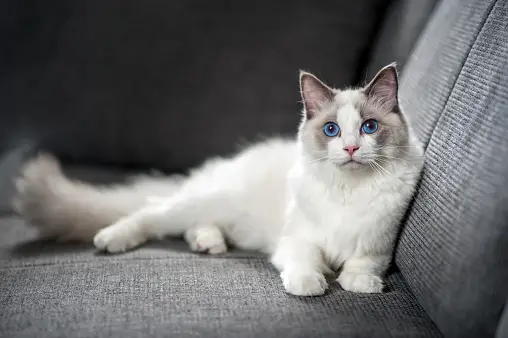Introduction
Welcome to the world of feline elegance and charm, where the Ragdoll cat breed reigns supreme. In this comprehensive guide, we will delve into the fascinating characteristics, history, care, and quirks of these enchanting felines. Join us as we uncover the mysteries of Ragdoll cats and why they have captivated the hearts of cat lovers worldwide.
The Origin Story of Ragdoll Cats
The captivating history of Ragdoll cats dates back to the 1960s when Ann Baker, a breeder from California, began her journey to create a distinctive and endearing breed. She selectively bred cats, including Josephine, a white Persian/Angora mix, which led to the development of the Ragdoll breed. The breed's name reflects their tendency to go limp when picked up, a unique trait that sets them apart.
Physical Attributes of Ragdoll Cats
1. Size and Build
Ragdolls are known for their large, muscular frames. Males can weigh between 15 to 20 pounds, while females are slightly smaller, ranging from 10 to 15 pounds.
2. Coat Colors and Patterns
The Ragdoll's coat is soft, semi-long, and comes in various colors and patterns, including colorpoint, mitted, and bi-color. The most common coat colors are seal, blue, chocolate, and lilac.
Temperament: Gentle Giants
Ragdoll cats are renowned for their gentle and laid-back nature. Here's a closer look at their temperament:
3. Affectionate Nature
Ragdolls are true lap cats, craving human attention and affection. They often follow their owners around the house, seeking companionship.
4. Playful and Intelligent
Despite their calm demeanor, Ragdolls are playful and highly intelligent. They enjoy interactive toys and puzzle games that stimulate their minds.
Caring for Your Ragdoll Companion
5. Diet and Nutrition
Maintaining a balanced diet is essential for Ragdoll cats. High-quality cat food, both wet and dry, will help them thrive. Consult your veterinarian for dietary recommendations.
6. Grooming Needs
Their semi-long fur requires regular grooming to prevent matting. Weekly brushing and occasional baths will keep their coat in top condition.
Health Considerations
7. Common Health Issues
While generally healthy, Ragdoll cats can be prone to certain health issues, including heart disease and kidney problems. Regular vet check-ups are crucial to ensure their well-being.
Bringing a Ragdoll Cat Home
8. Adoption vs. Breeder
Deciding between adopting a Ragdoll from a shelter or getting one from a reputable breeder is an important choice. Both options have their merits and should be considered carefully.
9. Preparing Your Home
Make your home Ragdoll-friendly by providing scratching posts, cozy spots for lounging, and safe play areas. Ragdolls love vertical space, so consider tall cat trees.
Conclusion
In conclusion, Ragdoll cats are a captivating breed known for their beauty, gentle disposition, and playful nature. Bringing a Ragdoll into your home can be a rewarding experience, but it's essential to understand their unique needs and characteristics.
Unlock the world of Ragdoll cats breed and experience their charm and beauty firsthand. If you're ready to welcome one into your home, make sure to provide them with the love and care they deserve.
At Everyday Pets, we are dedicated to providing accurate and valuable information to help you make informed decisions about your furry friend's well-being. Thank you for trusting us as your source for reliable pet care advice.
Frequently Asked Questions
1. Are Ragdoll cats breed suitable for families with children and other pets?
Ragdolls are generally excellent family pets, known for their tolerance and affectionate nature. They tend to get along well with both children and other animals.
2. How long do Ragdoll cats typically live?
Ragdoll cats breed have a lifespan of around 15 to 20 years with proper care. Regular veterinary check-ups and a healthy lifestyle can contribute to their longevity.
3. Do Ragdolls require a lot of grooming?
While Ragdoll cats have semi-long fur, their grooming needs are manageable with regular brushing. However, it's essential to keep their coat free of mats to prevent discomfort.
4. Are Ragdoll cats indoor or outdoor cats?
Ragdolls are best kept indoors to protect them from potential dangers, as they are often too trusting of strangers. Creating an enriched indoor environment is crucial for their well-being.
5. How can I find a reputable Ragdoll breeder?
To find a reputable Ragdoll breeder, research online, visit cat shows, and ask for recommendations from local cat clubs or veterinarians. Ensure the breeder follows ethical breeding practices.


0 Comments